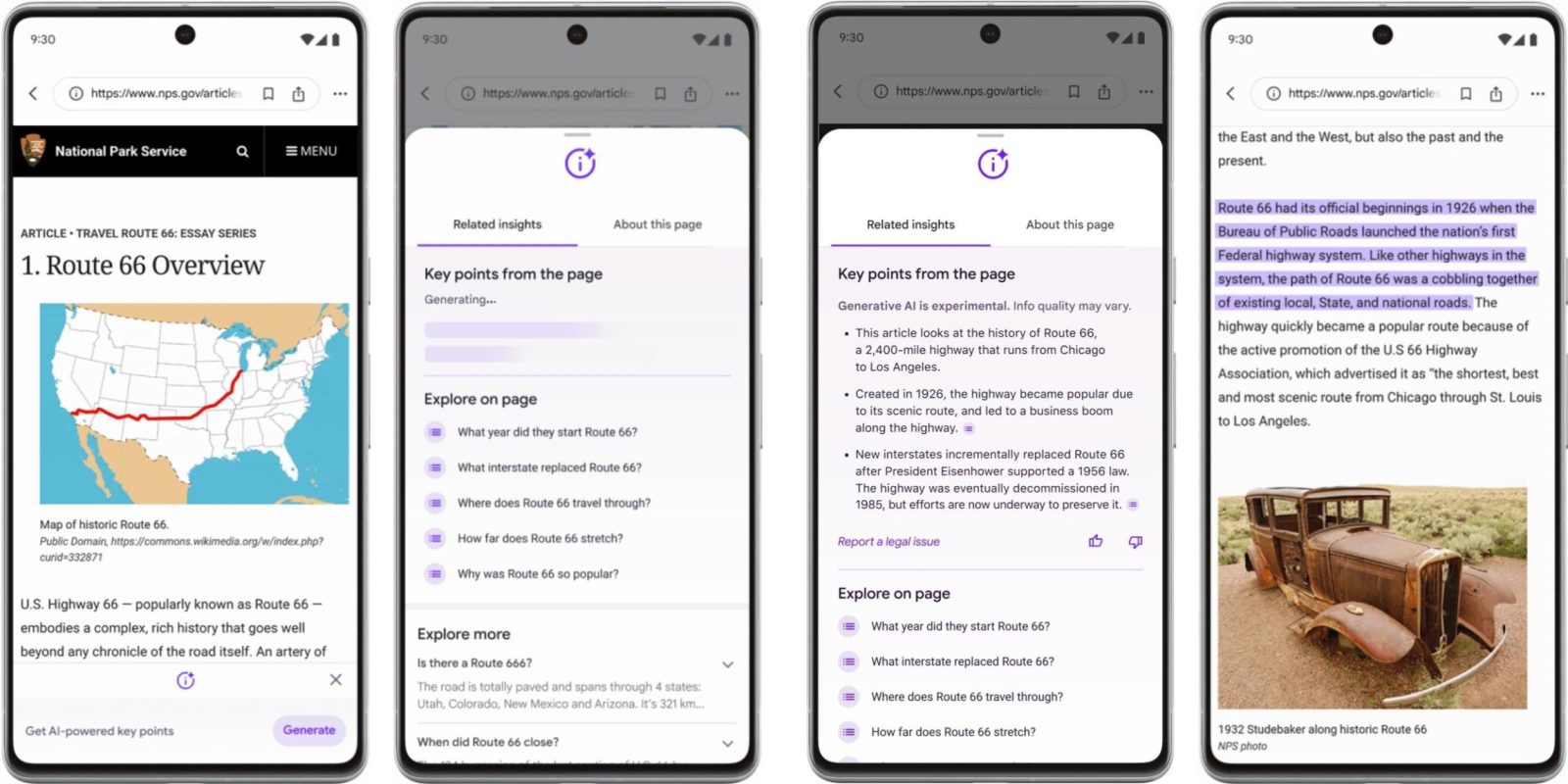
The biggest update to Google’s Search Generative Experience (SGE) since its launch will let the AI appear outside Search results and be accessible when you’re just browsing the web.
Google calls “SGE while browsing” an early experiment to “test how generative AI can help you navigate information online and get to the core of what you’re looking for even faster.” It will more or less summarize big articles.
“SGE while browsing” was specifically designed to help people more deeply engage with long-form content from publishers and creators, and make it easier to find what you’re looking for while browsing the web.
On the Google app for Android and iOS, you’ll see a bottom panel with a purple info icon with a corner sparkle to “Get AI-powered key points.” Tapping “Generate” slides up two tabs with the existing “About this page” and “Related insights” appearing.
Google will show “Key points from the page” as a bulleted list. Tapping a bullet point will scroll you to the source text used for that summary, which is a handy way to learn more.
On the desktop version of Chrome, SGE while browsing appears in a new Google Search side panel that joins existing ones for Reading List, Bookmarks, and Journeys.
Google frames this tool as useful for “when you’re learning something new or complex,” as well as being “handy for other tasks like finding a new recipe or researching a big purchase.”
SGE while browsing only works on free, non-paywalled articles and is available starting today for those already opted into Search Labs on Android and iOS. It will also be available as a standalone experiment, with desktop Chrome availability coming “in the days ahead.”
Meanwhile, in Google Search results, SGE will soon allow you to hover over key terms to reveal a popup with definitions, including diagrams or related images. Google is also improving the quality of STEM, economics, history, and other responses.
Meanwhile, code response will “now be color-coded with syntax highlighting, so it’s faster and easier to identify elements like keywords, comments, and strings, helping you better digest the code you see at a glance.”
FTC: We use income earning auto affiliate links. More.




Comments